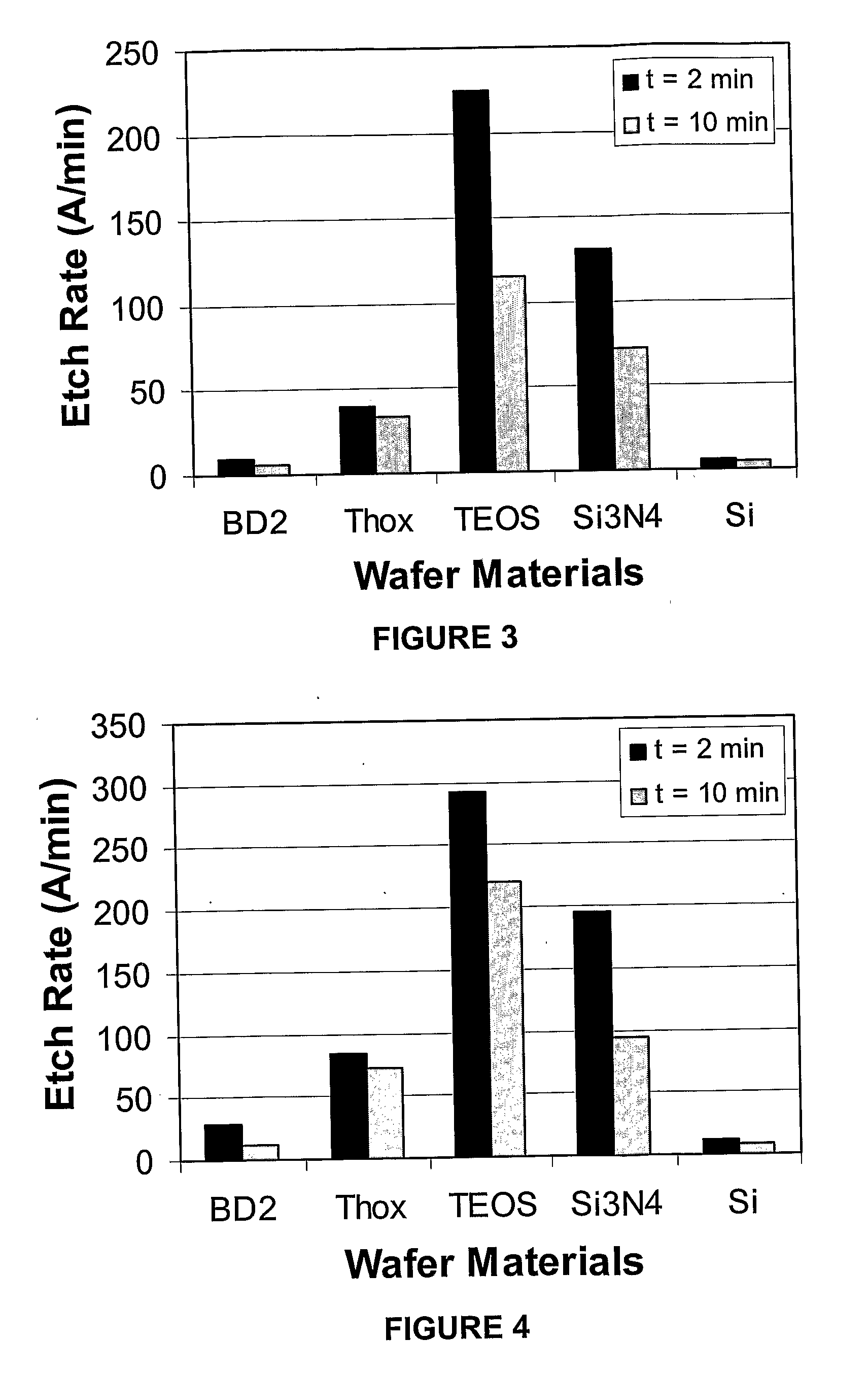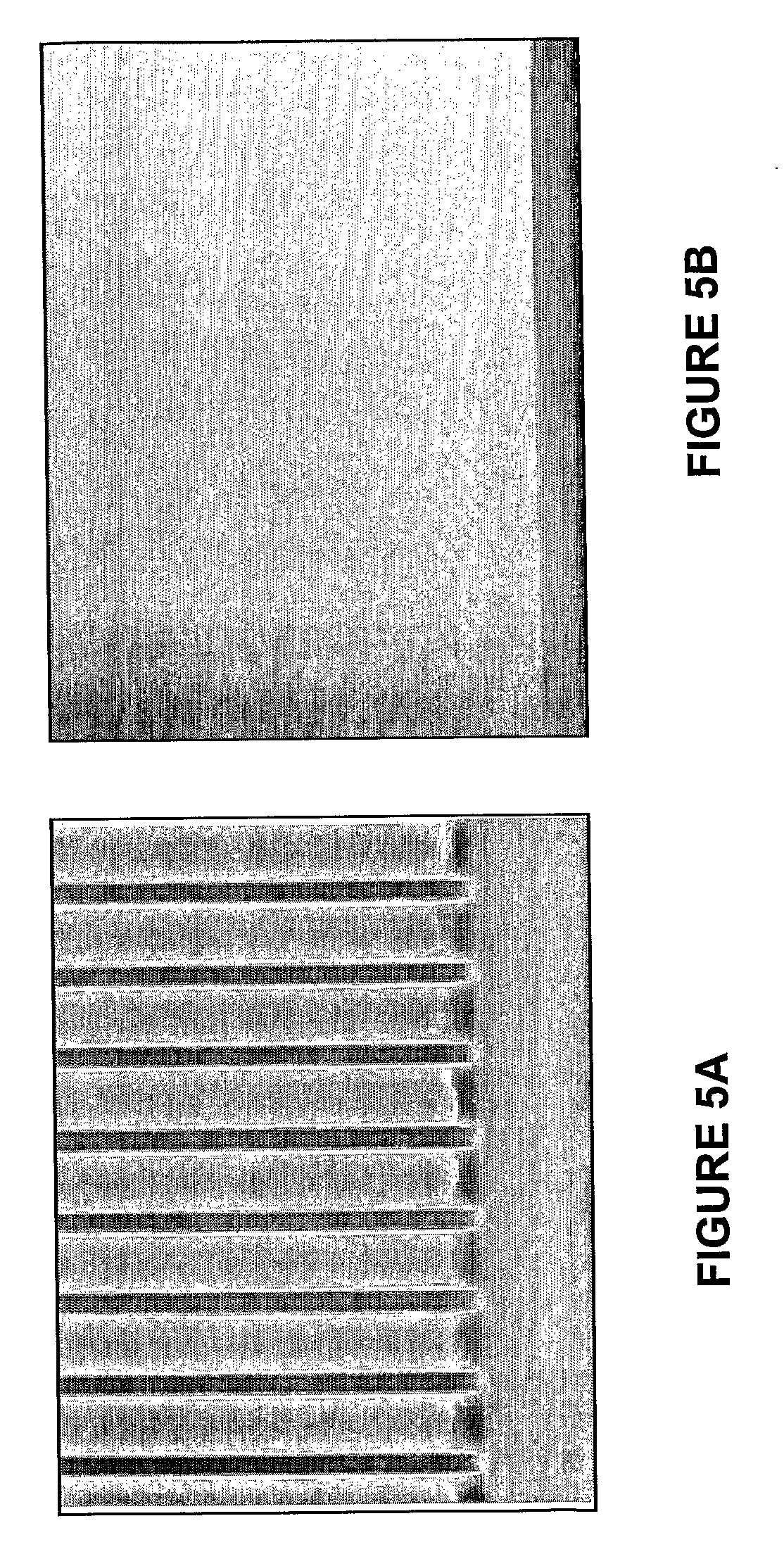Formulations for Cleaning Ion-Implanted Photoresist Layers from Microelectronic Devices
a technology of photoresist layer and microelectronic device, which is applied in the direction of detergent compounding agent, inorganic non-surface active detergent composition, instruments, etc., can solve the problems of physical and chemical rigidity, time-consuming and costly processes, and the rigid ion-implanted photoresist layer, also referred to as the carbonized region or “crust,” has been difficult to remov
- Summary
- Abstract
- Description
- Claims
- Application Information
AI Technical Summary
Benefits of technology
Problems solved by technology
Method used
Image
Examples
example 1
[0083]Dilute chelating agent (Lewis base / HF adducts) (0.4 g) was combined with 40 mL of a co-solvent to form compositions having a 1 w / v % of fluoride source for etch rate studies. The dilute Lewis base / HF adducts were prepared as follows. Commercially available Lewis base / HF adducts, specifically pyridine / HF (1:9) and triethylamine / HF (1:3), were diluted to 1:3, 1:1 and 3:1 (mol:mol) using the same Lewis base. To make pyridine / HF (1:3), 52 wt. % of pyridine / HF (1:9) and 48 wt. % anhydrous pyridine were combined. To make pyridine / HF (1:1), 27 wt. % of pyridine / HF (1:9) and 73 wt. % anhydrous pyridine were combined. To make pyridine / HF (3:1), 11 wt. % of pyridine / HF (1:9) and 89 wt. % anhydrous pyridine were combined. To make triethylamine / HF (1:1), 71 wt. % of triethylamine / HF (1:3) and 29 wt. % anhydrous triethylamine were combined. To make triethylamine / HF (3:1), 44 wt. % of triethylamine / HF (1:3) and 56 wt. % anhydrous triethylamine were combined. With dilute triethylamine / HF (1:...
example 2
[0088]The sample wafer examined in this study was a patterned silicon wafer including bulk and ion-implanted photoresist layers (see FIG. 5A). Various chemical additives, as described herein, were added to the dense fluid removal composition and removal efficiency of said composition evaluated. The dense fluid removal composition included 98.95 wt. % SCCO2, 1 wt % methanol, and 0.05 wt. % pyridine / HF complex (1:1 mole ratio). The temperature of the SCF-based composition was maintained at 70° C. throughout the removal experiments. The removal conditions included a static soak at 3,800 psi for 10 minutes described hereinabove. Following removal, the wafer was thoroughly rinsed first with copious amounts of SCCO2 / methanol and then with copious amounts of pure SCCO2, as described herein, in order to remove any residual solvent and / or precipitated chemical additives. FIG. 5B shows the result of this experiment, as described herein below.
[0089]FIG. 5A is a scanning electron micrograph (60...
PUM
| Property | Measurement | Unit |
|---|---|---|
| temperature | aaaaa | aaaaa |
| pressure | aaaaa | aaaaa |
| thickness | aaaaa | aaaaa |
Abstract
Description
Claims
Application Information
 Login to View More
Login to View More - R&D
- Intellectual Property
- Life Sciences
- Materials
- Tech Scout
- Unparalleled Data Quality
- Higher Quality Content
- 60% Fewer Hallucinations
Browse by: Latest US Patents, China's latest patents, Technical Efficacy Thesaurus, Application Domain, Technology Topic, Popular Technical Reports.
© 2025 PatSnap. All rights reserved.Legal|Privacy policy|Modern Slavery Act Transparency Statement|Sitemap|About US| Contact US: help@patsnap.com



